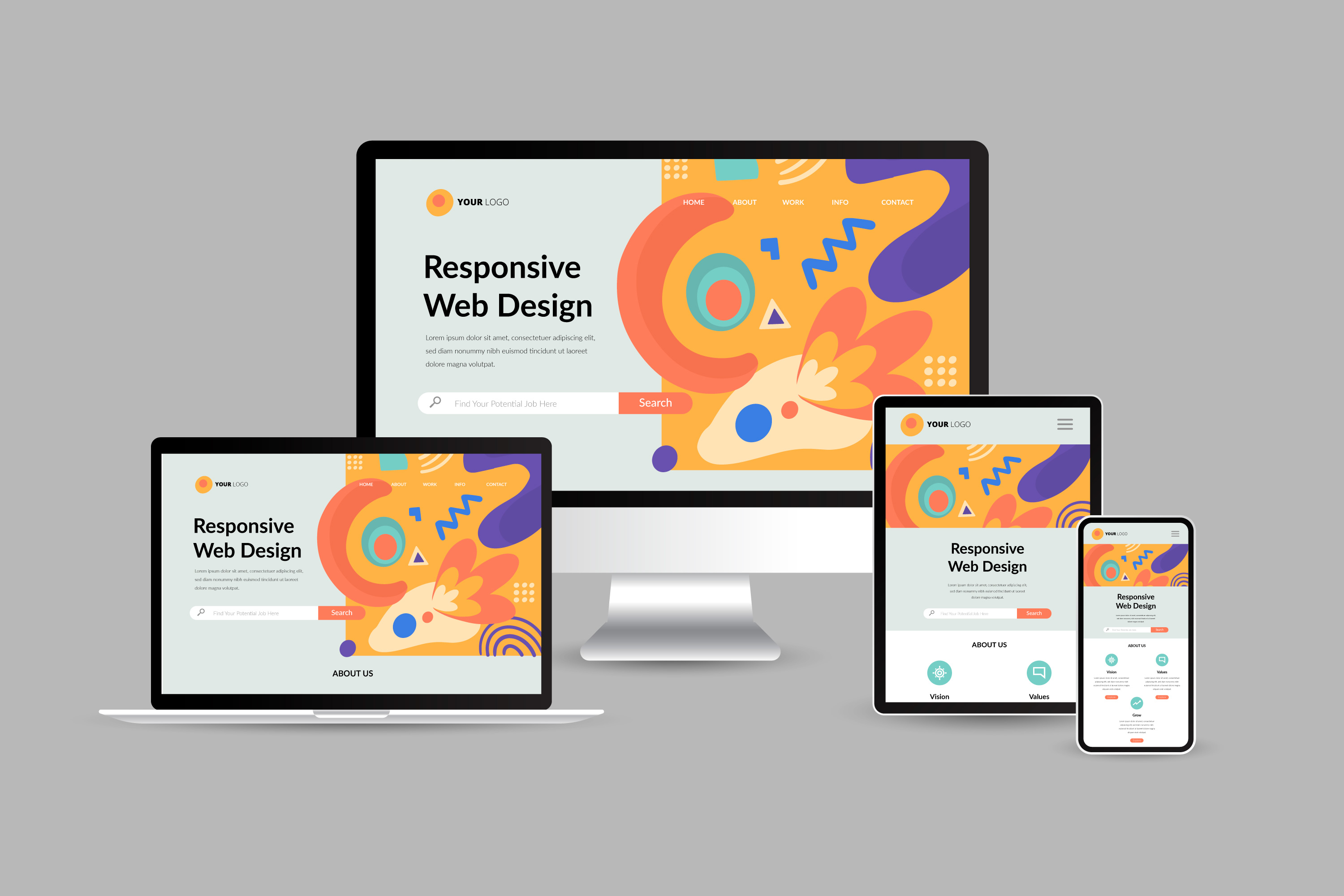How Website Design Impacts Brand Perception and Trustworthiness
How Website Design Impacts Brand Perception and Trustworthiness
Blog Article
The Ultimate Guide to Modern Internet Site Style Trends
In the ever-evolving electronic landscape, modern website design trends play a critical role fit customer experience and involvement. From the increase of minimalist layout concepts that focus on simpleness to the influence of strong typography in defining brand name identity, each element adds to a cohesive on-line presence. The emphasis on mobile-first and responsive strategies, together with innovative microinteractions, even more boosts use. Additionally, the expanding focus on lasting web design techniques mirrors a commitment to environmental obligation. These trends jointly elevate vital inquiries regarding the future of efficient internet style and what it indicates for organizations and consumers alike.
Minimalist Layout Concepts
Minimal style principles stress the idea that less is a lot more, promoting for simpleness and performance in aesthetic communication. This technique strips away unneeded elements, focusing rather on necessary parts that communicate the designated message efficiently. By prioritizing clarity, minimalist layout enhances customer experience, permitting site visitors to navigate websites easily.
Core tenets of minimal style include using adequate white space, which produces a sense of equilibrium and organization. This unfavorable space not just directs the audience's focus to vital elements however also fosters a relaxing aesthetic atmosphere. Furthermore, a minimal shade combination is commonly utilized, utilizing soft colors or monochromatic schemes to preserve visual communication and stop frustrating the individual.
Typography plays an important duty in minimal design, where understandable fonts are picked for their simplicity and performance in connecting content. Pictures and graphics are utilized sparingly, ensuring that they serve a function instead of distract from the general message. Ultimately, minimal style concepts cultivate a focused environment that motivates users to engage with the web content, boosting the overall effectiveness of modern site design. This pattern mirrors an expanding recognition for thoughtful, user-centric visual appeals in electronic rooms.
Strong Typography Choices
Embracing bold typography options has actually become a defining feature of modern web site style, as it properly catches attention and shares strong messaging. Developers are increasingly making use of typography not merely as a functional element yet as a crucial aesthetic element that boosts the overall aesthetic and customer experience.

In addition, the association of vibrant typography with minimalist style concepts permits striking contrasts, improving readability while maintaining visual allure. Using whitespace around bold text additionally emphasizes its importance, ensuring that the message reverberates with the target market.
As digital landscapes come to be a lot more affordable, leveraging strong typography enables brands to separate themselves and leave a long-term impression. The cautious option of fonts and their application can evoke emotions, establish tone, and drive activity, making strong typography a crucial tool in modern web site layout. Inevitably, it is a powerful means to enhance storytelling and make certain that essential messages are not only seen yet also really felt.
Responsive and Mobile-first Layout
Mobile-first and responsive design has actually arised as a crucial principle in contemporary website growth, reflecting the increasing dependence on mobile devices for accessing online content. As user behavior shifts in the direction of mobile browsing, developers need to prioritize creating experiences that adjust flawlessly across numerous display sizes and resolutions.
A receptive design guarantees that an internet site automatically adjusts its design, photos, and capability based on the tool being made use of. Mobile-first layout advocates for creating sites at first for smaller screens, subsequently scaling up to larger screens.
Executing receptive and mobile-first concepts not just deals with user preferences however also straightens with search engine optimization (SEARCH ENGINE OPTIMIZATION) practices. Major online search engine, like Google, prioritize mobile-friendly sites in their positions, making it essential for businesses to adopt these design techniques. In an affordable digital landscape, accepting receptive and mobile-first design is not simply a choice; it is vital for my company guaranteeing availability and engagement with a varied target market.
Involving Microinteractions
Microinteractions play a critical function in boosting user involvement and overall internet site experience, especially in the context of mobile-first and receptive style. These subtle layout components supply instant feedback to users, like it making interactions extra pleasurable and user-friendly. Instances include switch animations, notice signals, and filling indications, which not only overview individuals but additionally develop a sense of connection with the interface.
Integrating interesting microinteractions can substantially boost use by minimizing cognitive tons. When individuals obtain aesthetic or auditory comments upon performing actions, such as clicking a switch or sending a kind, they feel extra certain in their selections. This fosters a smoother navigating experience, ultimately boosting user retention.

As site layout trends remain to advance, the relevance of microinteractions can not be overemphasized. They serve as the refined yet powerful touchpoints that change regular interactions into remarkable experiences, thus boosting the general efficiency of contemporary website design.
Lasting Website Design Practices
Lasting website design practices are coming to be increasingly vital as the electronic landscape expands and ecological problems increase. Developers and designers are identifying their responsibility to develop sites that not just offer individual needs however likewise lessen ecological effect. This technique includes a number of essential approaches.
To start with, maximizing power usage is vital. Internet sites need to be designed to pack rapidly and efficiently, which lowers web server power use and improves individual experience. Methods such as photo compression, reducing HTTP demands, and utilizing modern-day coding methods add substantially to this objective.
Secondly, picking eco-friendly hosting providers is important - website design. Many holding firms are now powered by renewable power resources, enabling internet sites to operate in a much more lasting way. This option shows a commitment to minimizing carbon impacts
Additionally, adopting a minimalist style can boost sustainability. Fewer elements on a page lead to much less information transfer, which not just accelerates go packing times yet also saves resources.
Lastly, promoting electronic access makes certain that sites get to a wider target market without unnecessary bloat, lining up individual experience with ecological duty. By incorporating these lasting techniques, web designers can contribute favorably to both customer involvement and the earth's well-being.
Conclusion
In recap, contemporary site layout patterns stress the integration of minimal principles, strong typography, and receptive layout to improve individual experience. Engaging microinteractions add to memorable interactions, while sustainable techniques support for eco aware advancement. Collectively, these aspects not only boost visual allure yet likewise enhance performance, guaranteeing that websites are both easy to use and visually striking. Adopting these trends is crucial for developing impactful digital experiences that reverberate with individuals in a progressively affordable on the internet landscape.
In the ever-evolving electronic landscape, modern site layout patterns play an essential function in shaping customer experience and interaction. By focusing on quality, minimal layout enhances user experience, allowing site visitors to browse websites easily.
Ultimately, minimalist design concepts cultivate a focused setting that motivates users to engage with the material, enhancing the total efficiency of modern-day web site layout.Microinteractions play an essential function in improving customer interaction and total site experience, specifically in the context of mobile-first and receptive design.In summary, contemporary web site design trends highlight the integration of minimal principles, vibrant typography, and responsive layout to enhance user experience.
Report this page